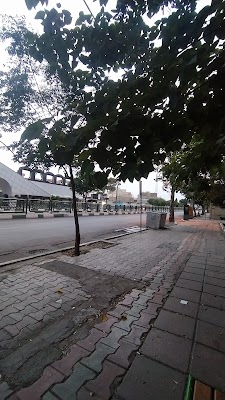Qazvin Bridge (پل قزوین)
Overview
Overview of Qazvin Bridge
The Qazvin Bridge (پل قزوین) in Ilam, Iran, is a remarkable architectural gem that showcases the rich history and cultural significance of the region. Nestled amidst the picturesque landscapes of Ilam Province, this bridge not only serves as a crucial transportation link but also stands as a testament to the artistry and engineering prowess of its time. Built during the Safavid era, the bridge is a stunning example of Persian architecture, characterized by its intricate brickwork and elegant arches, making it a must-visit for any traveler exploring Iran.
As you approach the Qazvin Bridge, you will be drawn in by its majestic structure that spans the river, creating a striking contrast against the backdrop of the rugged mountains. The bridge is adorned with beautiful tilework and inscriptions that reflect the cultural heritage of the area. Walking across, you can take in the views of the flowing river beneath and the lush greenery that surrounds the site, making it an ideal spot for photography and relaxation.
Historical Significance
The historical context of the Qazvin Bridge adds layers to its appeal. Constructed in the 17th century, it was built to facilitate trade and travel between important towns in the region. The bridge played a vital role in the economic development of Ilam and surrounding areas, serving as a crucial artery for merchants and travelers alike. Today, it stands as a reminder of the strategic importance of this region throughout history, reflecting the enduring spirit of the people who lived and thrived here.
Visitors to Qazvin Bridge will find fascinating stories tied to its existence. Local legends speak of its construction involving master craftsmen and how it has withstood the test of time, surviving various natural challenges and historical events. Engaging with local guides can enrich your understanding of these narratives, providing a deeper appreciation of the bridge's significance in Iranian culture and history.
Exploring the Surrounding Area
Beyond the bridge itself, the surrounding area offers a wealth of activities and attractions. The nearby town of Ilam is known for its vibrant bazaars, where you can immerse yourself in local life and shop for unique handicrafts, spices, and traditional garments. The region is also famous for its stunning natural landscapes, including mountains, valleys, and lush forests, perfect for hiking and outdoor activities.
For those interested in history, the nearby Ilam Museum showcases artifacts and exhibits that delve into the rich heritage of the province, including items from different eras, such as ancient Persia and the Islamic period. This combination of natural beauty and cultural richness makes a visit to Qazvin Bridge an enriching experience that provides insight into the heart and soul of Iran.
Tips for Travelers
When planning your visit to the Qazvin Bridge, it's advisable to check the local weather, as the best time to explore this area is during spring and autumn when temperatures are mild and the scenery is at its most stunning. Be sure to wear comfortable shoes, as you may want to explore both the bridge and its surrounding attractions on foot.
Lastly, don't forget to sample some of the local cuisine at nearby restaurants, where you can indulge in traditional Persian dishes that will delight your taste buds. The warmth and hospitality of the local people will surely make your experience unforgettable, as they share their stories and pride in their heritage.
In summary, the Qazvin Bridge in Ilam is not just a point of passage; it is a gateway into the rich tapestry of Iranian culture and history, making it an essential stop for any traveler seeking to understand the depth and beauty of this extraordinary country.



